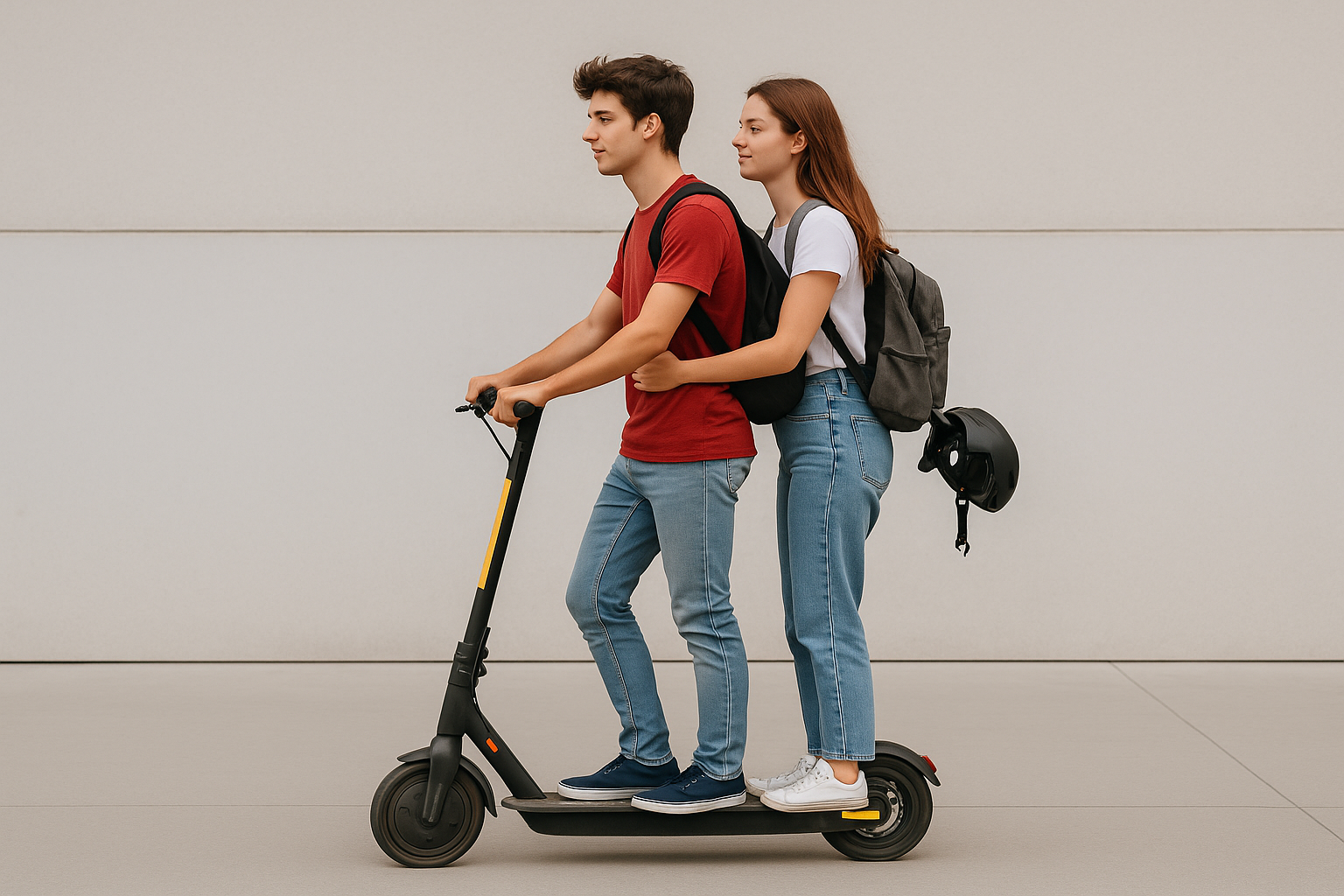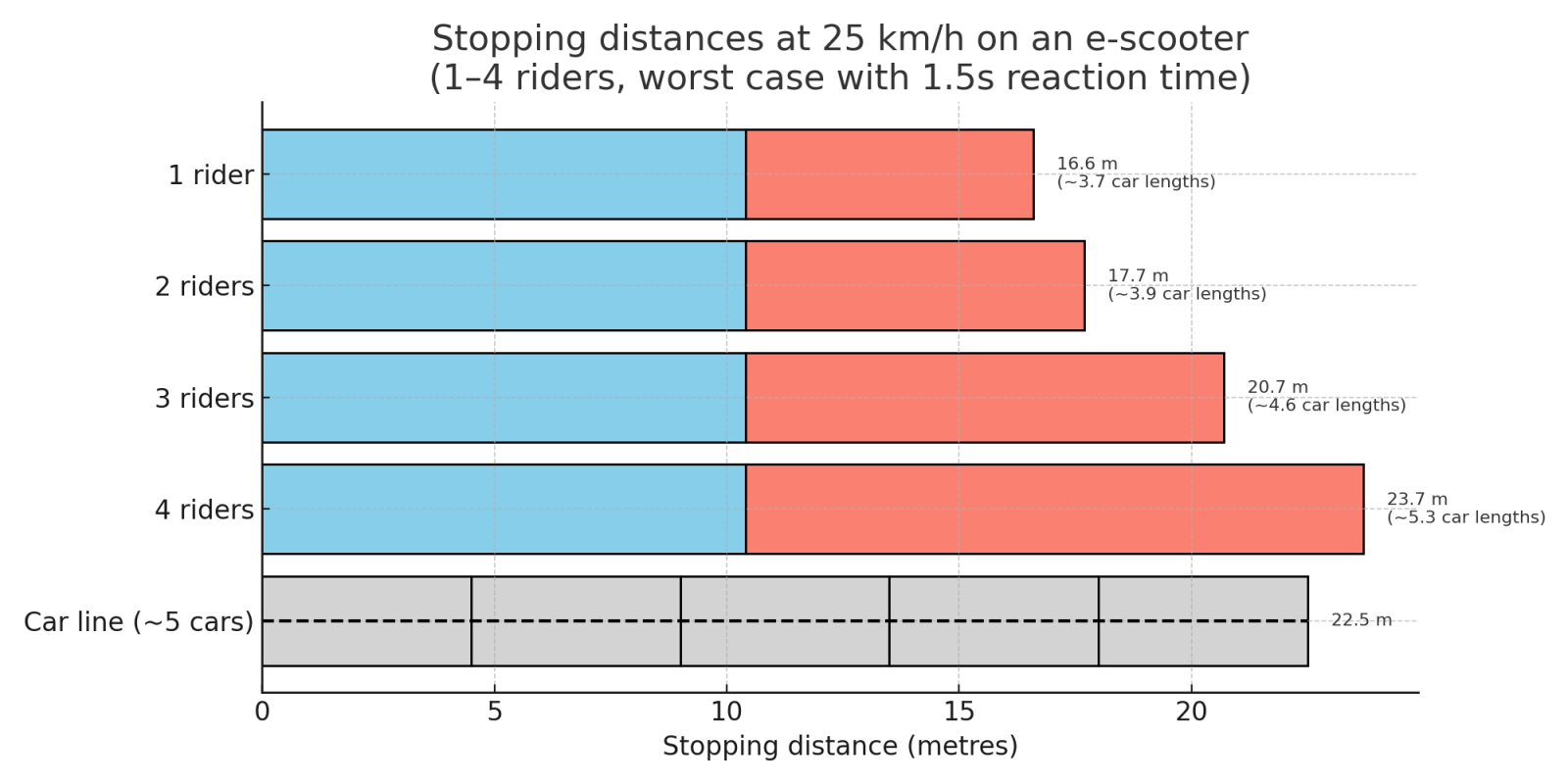Electric scooters have become a popular way for teenagers and young adults to get around. Compact, affordable, and quiet, they seem harmless. But behind that convenience lies a reality that isn’t about rules — it’s about physics.



Contents
Small Vehicle, Big Force
An average scooter weighs about 20 kilograms. Add a 70-kilogram rider, and you have 90 kilograms travelling at speeds of up to 25 km/h. In a crash, that creates over 2,000 joules of energy.
What does that mean? Enough to:
- Light a 100-watt bulb for 20 seconds.
- Smash into you like a 20-kg suitcase dropped from a third-storey window.
- Hit with the combined force of four handgun bullets.
Even at “just” 25 km/h, the body isn’t built to absorb that impact.

The Head-On Scenario
Collide with a car at 50 km/h and the combined speed rises to 75 km/h. The energy soars to more than 7,000 joules — enough to destroy a scooter and cause catastrophic injuries.
Injuries That Last
Without a helmet, riders face severe head trauma, skull fractures, and brain injury. Even with protection, wrists, ribs, and spines are at risk. Many victims need months of rehabilitation, and some live with permanent damage.
The Common Mistakes
- Riding without a helmet.
- Wearing dark clothing, making yourself invisible to drivers.
- Using headphones or phones, losing awareness.
- Carrying passengers, doubling the weight — and the danger.
- Ignoring traffic signs, forgetting that scooters are vehicles under the law.
Respect the Science
Momentum, gravity, and impact force aren’t optional. They’re laws of physics. And as we often say:
“The faster you go, the heavier the blow. You don’t walk away from every crash.”
What You Can Do
- Always wear a certified helmet.
- Use reflective clothing and fit lights.
- Stay alert — no phones, no headphones.
- Know the rules of the road.
Discover more from N332.es - Driving In Spain
Subscribe to get the latest posts sent to your email.

You must be logged in to post a comment.